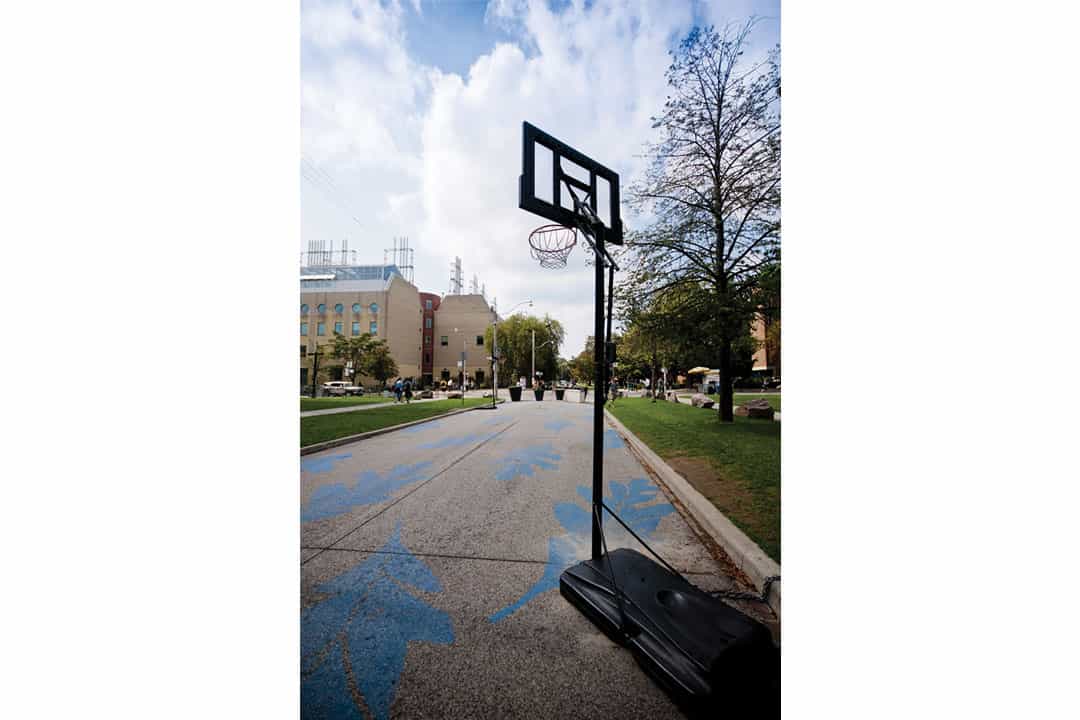UTSG is nestled within Toronto’s downtown core, making it well integrated within the city’s traffic network. While this integration is convenient, the downside is that car-free spaces for pedestrians are limited.
There lingers an ever-present danger for pedestrian-motor vehicle accidents, and so studying in the heart of North America’s fourth-largest city requires students to be extra vigilant when travelling across campus.
As a response to this problem, the university and city have partnered to identify road corridors that may be suitable or appropriate for pedestrian-only spaces over the past decade.
Identifying potential sites for pedestrianization depends on locational features that can be developed to promote an improved flow of and use by foot traffic. Favourable candidate sites should also be supported by an already low traffic-to-pedestrian ratio, to minimize any adverse side effects closure might have for the city’s traffic network.
Through this partnership, two of the campus’ more well-contained streets were identified — both thought to be potential student hotspots — and were piloted for project feasibility.
One of the 2010 pilot sites was Devonshire Place, which runs perpendicular to Harbord Street and connects with Bloor Street on its north end. Ultimately, that site was scrapped as a potential long-term pedestrian space because it was determined there wasn’t enough foot traffic to justify the limitations on motor traffic.
Devonshire Place is not a major city thoroughfare, so it’s easy to appreciate why it was originally selected. However, it’s also understandable why the pilot site was abandoned.
The other site is a section of Willcocks Street, which connects Lash Miller Chemical Laboratories and Sidney Smith Hall between St. George Street and Huron Street. This site was much more promising, and was later approved as a permanent pedestrian space. Its pedestrianization was completed around 2012.
Recently, it has been targeted for a revitalization project, called the Willcocks Commons, to update or expand amenities.
The potential expansion will expand the pedestrian-only corridor to connect with Spadina Avenue.
The revitalization project is headed by DTAH, an architectural firm which has considerable experience in urban design and landscape architecture. The popular Toronto Waterfront and Evergreen Brickworks urban spaces are already under its portfolio.
The project’s first phase, which involved the development of initial design concepts and community consultation, was completed in 2016. The commons have since been put on hold for an indeterminate period of time, while funds are raised that will allow further project development.
The successful example of the Willcocks Commons, with its many amenities and regular usage, suggests how students and the wider U of T community stand to benefit from pedestrianization.
Cordoning off areas on campus from motor traffic isn’t just important for improving campus’ spatial contiguity and traffic safety. These spaces can also serve the community as a public square. Space for hosting outdoor events and facilitating community interactions and exchanges are important for campus’ cultural development and social enrichment. A vibrant and thriving student community is also a key for helping foster a more engaging and inclusive learning environment.
A renewed commitment to long-term investment in community projects, like the Willcocks Commons, is crucially needed, but the lack of funding for revitalization projects is concerning. The administration must not forget the importance of encouraging deeper investment into the campus community.
Oscar Starschild is a second-year Mathematics, Philosophy, and Computer Science student at Woodsworth College.


